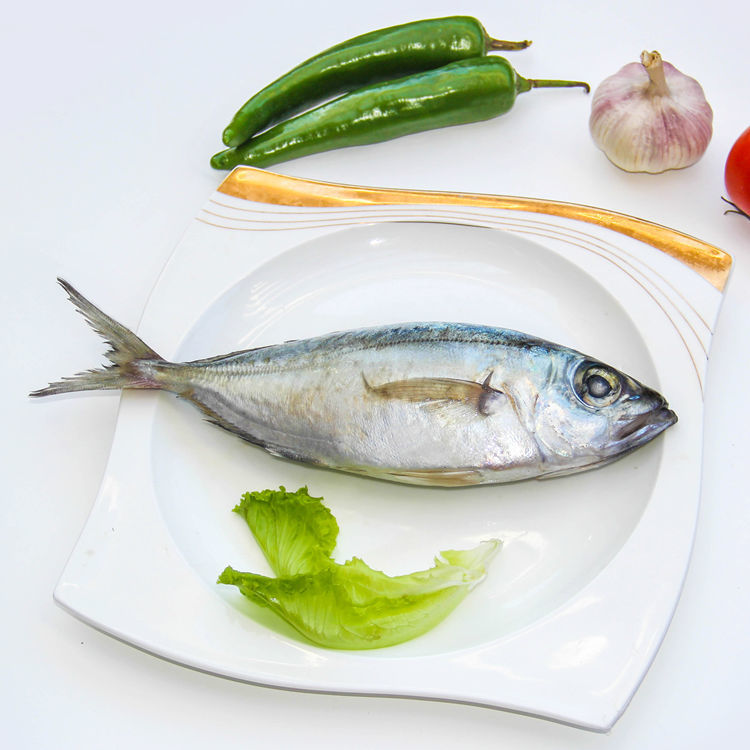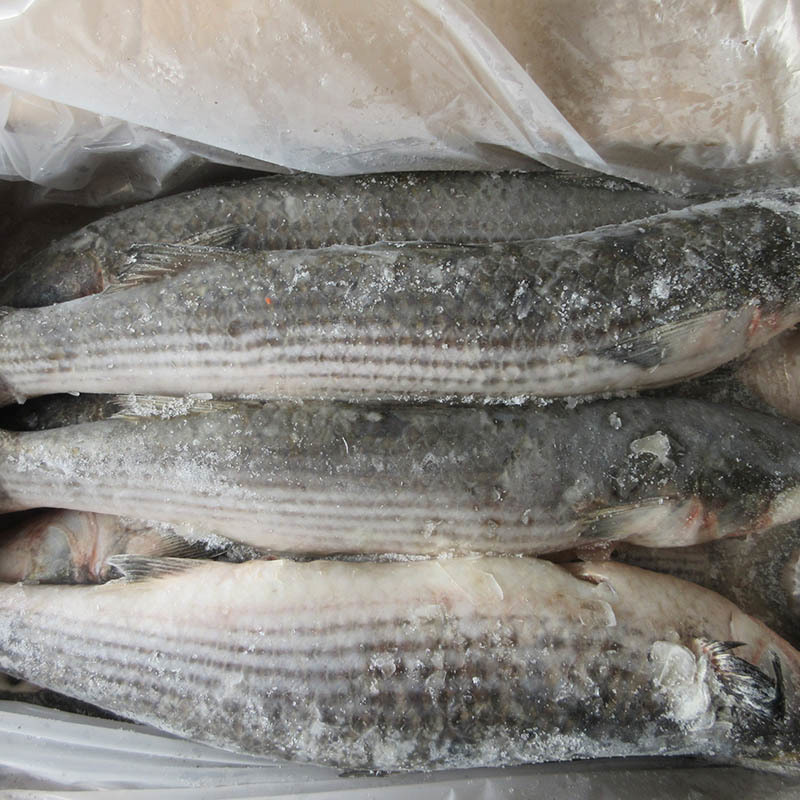The company's mission is to provide high-quality seafood to global buyers.
WhatsApp / WeChat : +8618659702877
Exploring the Culinary Versatility of Pacific Mackerel (Scomber Japonicus): A Comprehensive Guide
2025-10-18
Introduction to Pacific Mackerel (Scomber Japonicus)
Pacific Mackerel, scientifically known as Scomber Japonicus, is a highly prized fish in culinary circles. Renowned for its rich flavor, firm texture, and adaptability in various recipes, it serves as a staple in many Asian cuisines. This article aims to explore the **culinary versatility** of Pacific Mackerel, highlighting its nutritional benefi
Introduction to Pacific Mackerel (Scomber Japonicus)
Pacific Mackerel, scientifically known as Scomber Japonicus, is a highly prized fish in culinary circles. Renowned for its rich flavor, firm texture, and adaptability in various recipes, it serves as a staple in many Asian cuisines. This article aims to explore the **culinary versatility** of Pacific Mackerel, highlighting its nutritional benefits, cooking methods, and unique recipes that can elevate any dining experience.
The Nutritional Benefits of Pacific Mackerel
Pacific Mackerel is not only delicious but also packed with essential nutrients. Here are some of the notable health benefits:
Rich in Omega-3 Fatty Acids
One of the standout features of Pacific Mackerel is its high omega-3 fatty acid content. These healthy fats are known to support heart health, reduce inflammation, and improve cognitive function.
High-Quality Protein Source
With an impressive protein content, Pacific Mackerel provides the essential amino acids necessary for muscle growth and repair. Incorporating this fish into your diet can help meet daily protein requirements effectively.
Vitamins and Minerals
Pacific Mackerel is a rich source of vitamins B12 and D, along with minerals such as selenium and phosphorus. These nutrients play crucial roles in metabolism, bone health, and immune function.
Understanding the Culinary Applications of Pacific Mackerel
The versatility of Pacific Mackerel allows it to be prepared in various ways, making it a favorite among chefs and home cooks alike. Below are some popular culinary applications:
Grilling Pacific Mackerel
Grilling brings out the natural flavors of Pacific Mackerel while imparting a smoky aroma. A simple marinade of olive oil, lemon juice, and herbs enhances the taste while keeping the fish moist.
Grilled Pacific Mackerel Recipe
1. Clean and gut the fish.
2. Marinate in olive oil, garlic, lemon juice, salt, and pepper for at least 30 minutes.
3. Preheat the grill and cook for about 5-7 minutes per side or until the flesh flakes easily.
Pan-Seared Pacific Mackerel
Pan-searing is another excellent method that results in a crispy skin and tender flesh. This cooking technique allows for quick preparation and a flavorful dish.
Pan-Seared Pacific Mackerel Recipe
1. Season the fish fillets with salt and pepper.
2. Heat a pan over medium-high heat and add oil.
3. Sear skin-side down for 4-5 minutes, then flip and cook for an additional 2-3 minutes.
Pacific Mackerel in Soups and Stews
Pacific Mackerel is also ideal for soups and stews, where it absorbs the flavors of the broth. Japanese miso soup and Thai curries are excellent examples of dishes that benefit from the addition of this fish.
Miso Soup with Pacific Mackerel Recipe
1. Prepare dashi broth or water.
2. Add miso paste and mix well.
3. Incorporate diced Pacific Mackerel and simmer until cooked through.
4. Add tofu, seaweed, and green onions before serving.
Unique Flavor Profiles and Pairing Suggestions
Pairing Pacific Mackerel with complementary ingredients enhances its already rich flavor. Here are some unique flavor profiles and pairing suggestions:
Citrus and Herbs
Citrus, such as lemon or orange, paired with fresh herbs like dill or parsley, can brighten the dish and balance the fish's richness.
Spicy Elements
Incorporating spicy elements like chili flakes or jalapeños can add an exciting kick to your dishes, making them more adventurous.
Asian Flavors
Pacific Mackerel works remarkably well with soy sauce, ginger, and sesame oil, allowing for an authentic Asian-inspired meal.
Preserving Pacific Mackerel: Canning and Smoking
Preserving Pacific Mackerel is an excellent way to enjoy its flavors year-round. Two popular methods include canning and smoking.
Canning Pacific Mackerel
Canning allows for long-term storage while maintaining the fish's taste. Follow proper canning procedures to ensure safety and quality.
Smoking Pacific Mackerel
Smoking not only preserves the fish but also infuses it with a rich, savory flavor. Cold smoking retains the moisture, while hot smoking cooks the fish thoroughly.
Pacific Mackerel: Sustainable Seafood Choice
Choosing Pacific Mackerel supports sustainable fishing practices. As a species with healthy populations, it is a responsible choice for environmentally conscious consumers.
How to Source Sustainable Pacific Mackerel
Look for certifications from organizations like the Marine Stewardship Council (MSC) when purchasing Pacific Mackerel to ensure you are supporting sustainable fisheries.
Frequently Asked Questions (FAQs)
1. What is the best way to cook Pacific Mackerel?
The best way to cook Pacific Mackerel depends on personal preference. Popular methods include grilling, pan-searing, and incorporating it into soups or stews.
2. Can Pacific Mackerel be eaten raw?
Yes, Pacific Mackerel can be enjoyed raw in sushi or sashimi dishes, provided it is sourced from a reputable supplier.
3. How do I know if Pacific Mackerel is fresh?
Fresh Pacific Mackerel should have a clean, ocean-like smell, bright eyes, and firm flesh. Avoid fish with a strong or sour odor.
4. What are some side dishes that pair well with Pacific Mackerel?
Side dishes such as steamed rice, sautéed vegetables, and salads are great accompaniments to Pacific Mackerel, enhancing its flavors.
5. How can I store leftover Pacific Mackerel?
Leftover Pacific Mackerel should be stored in an airtight container in the refrigerator for up to two days or frozen for longer storage.
Conclusion
Pacific Mackerel (Scomber Japonicus) is a culinary gem that offers a multitude of flavors and preparation methods. Its nutritional benefits, combined with its versatility in the kitchen, make it an excellent choice for any meal. From grilling to canning, the possibilities are endless. By exploring the various ways to enjoy Pacific Mackerel, we can appreciate its unique qualities while making a sustainable seafood choice. Whether you are a seasoned chef or a novice cook, incorporating this delicious fish into your culinary repertoire will undoubtedly enhance your dining experiences.
Pacific Mackerel Scomber Japonicus
RELEVANT INFORMATION
Exploring the Culinary Versatility of Pacific Mackerel (Scomber Japonicus): A Comprehensive Guide
Introduction to Pacific Mackerel (Scomber Japonicus)
Pacific Mackerel, scientifically known as Scomber Japonicus, is a highly prized fish in culinary circles. Renowned for its rich flavor, firm texture, and adaptability in various recipes, it serves as a staple in many Asian cuisines. This article aims to explore the **culinary versatility** of Pacific Mackerel, highlighting its nutritional benefi
2025-10-18
Unveiling the Nutritional Benefits and Culinary Uses of Small Eyes Horse Mackerel
Small Eyes Horse Mackerel, scientifically known as *Trachurus picturatus*, is a noteworthy species in the family Carangidae, commonly found in various marine environments. This fish is characterized by its streamlined body and distinctive coloration, making it an appealing option for both commercial fisheries and culinary applications. Understanding its attributes can greatly benefit professionals
2025-10-15
The Role of Squid Tentacle in Global Culinary Traditions
The Role of Squid Tentacle in Global Culinary Traditions
Table of Contents
Introduction to Squid Tentacles
Nutritional Benefits of Squid Tentacles
Squid Tentacles in Asian Cuisine
Mediterranean Culinary Uses of Squid Tentacles
Squid Tentacle Cooking Techniques
The Globalization of Squid Tentacle Dishes
Squid Tentacles in Popular Culture
Frequently Asked Questions
2025-10-12







